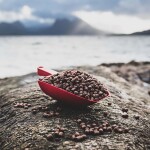Canada is officially reopening its redfish fishery for the first time in 30 years as part of a larger transitional plan for fisheries in the nation's coastal communities.
The Canadian redfish fishery consists of two species of redfish in the Gulf of St. Lawrence and Laurentian Channel areas – deepwater redfish (Sebastes mentella) and Acadian redfish (Sebastes fasciatus). Populations of the two species collapsed in 1995, but Canada’s Department of Fisheries and Oceans (DFO) has been running an experimental fishery to determine whether it could open up again.
Now, the provinces of Newfoundland and Labrador, Nova Scotia, New Brunswick, and Quebec will all get quotas for a new fishery after provinces lobbied for months to gain access to what was once a significant livelihood for fishers in Atlantic Canada. Canada Minister of Fisheries, Oceans, and the Canadian Coast Guard Diane Lebouthillier said the changes come as Canada faces tough choices regarding the future of its fisheries.
"Canada – a maritime nation at the forefront of climate change – is currently at a crossroads. In the face of these many challenges, we will need to be resilient, creative, and, above all, row together in the same direction,” she said. “By launching this robust transition plan today, our government is setting the stage for the future – a future where our children, grandchildren, and great-grandchildren will continue to fish for world-class fish and seafood.”
The DFO announced the reopening of the redfish fishery will occur in two separate phases: a two-year transitional phase to allow for data collection and grant fish harvesters and processors time to prepare, followed by a second phase that will focus on the long-term development of the fishery. It will be "a phase that, in view of the current scientific data, would be one of expansion," DFO said.
The DFO and a newly formed Redfish Advisory Committee comprising representatives from the fishing and processing industries, Indigenous groups, provincial governments, and other stakeholders will also determine rules on share allocations and the total allowable catch (TAC), the DFO said. The TAC for the revamped fishery has been set at 25,000 metric tons (MT) in 2024, according to the DFO.
Per the DFO, the offshore mobile gear fleet, composed of vessels 100 feet or longer, will receive 58.69 percent of the allocation; the inshore mobile gear fleet, comprising vessels shorter than 65 feet, will receive 14.84 percent; the midshore mobile gear fleet, made up of vessels between 65 and 100 feet in length, will receive 5.72 percent; inshore fixed-gear fishermen will receive 0.75 percent of the quota for bycatch; Estuary and Gulf of St. Lawrence shrimp harvesters will receive 10 percent; and Indigenous communities will receive 10 percent.
For the 2024 season, the DFO announced a significant decrease in the TAC for ...
Photo courtesy of Diane Lebouthillier/Facebook/Department of Fisheries and Oceans








